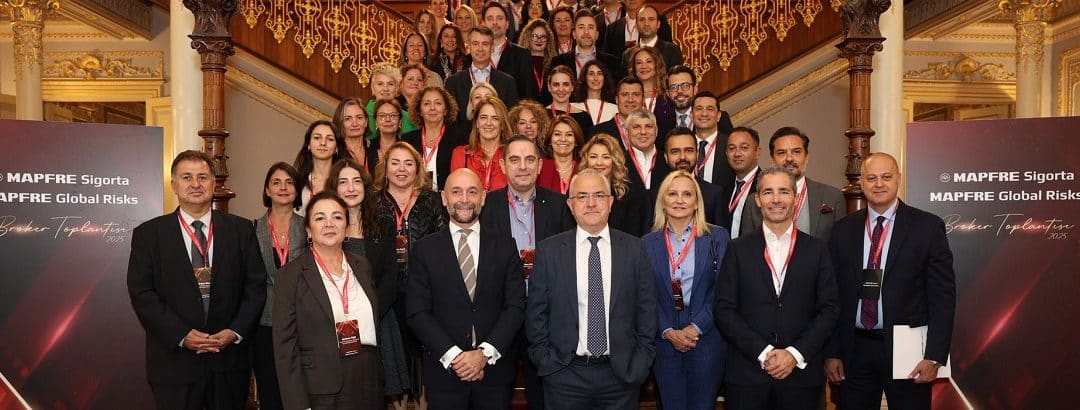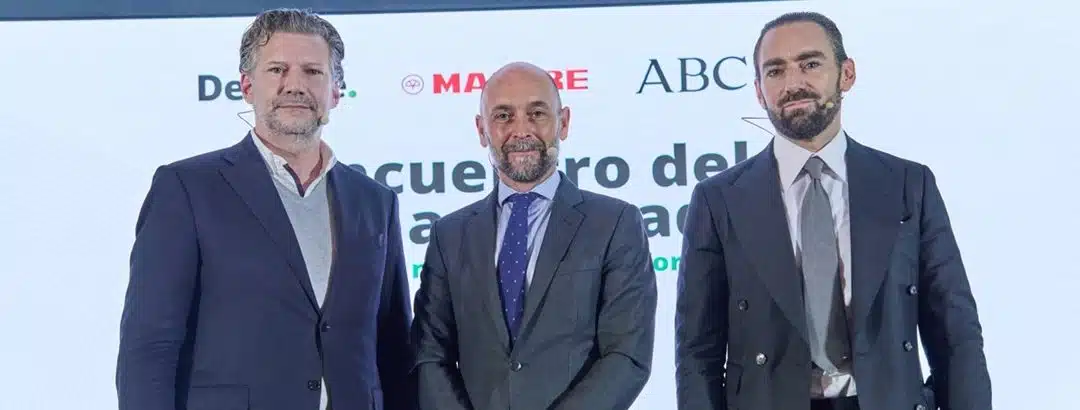Cristina Leon Vera | 11/07/2024
Moderated by Diego Bodas, Head of AI at MAPFRE, we were told about this disruptive technology by Pablo García Mexía, director of the Digital Law practice at Herbert Smith Freehills, Richard Benjamins, CEO of OdiseIA and Juan María Aramburu, Co-founder and CEO of Keepler Data Tech.
Artificial Intelligence is much more than an emerging technology or a passing trend. This is a paradigm shift, driven by the current ability to process large volumes of data. Aramburu highlighted during his participation in the debate that “now is the time to leverage all the work developed in recent decades,” emphasizing how AI is improving business operational efficiency.
Garcia Mexía, meanwhile, emphasized the magnitude of its impact by citing a study from the European Internet Institute that argues that “Artificial Intelligence is the largest disruption factor in Europe since World War II.” Beyond transforming sectors and businesses, it is deeply influencing our society, posing existential challenges that must be addressed.
The impact of applications like ChatGPT has democratized access to AI, “taking it out of corporations and bringing it to every citizen,” shared Richard Benjamins, emphasizing the importance of ethics in its use. “Technology itself does nothing; it is always the people and organizations behind it who decide the impact.” Although he ruled out AI as a threat to human existence, he still emphasized that it poses risks that must be managed responsibly.
Impact on the global risk management
Among all its applications, Artificial Intelligence is transforming global risk management by providing advanced tools for disaster prevention, response, and recovery. Predicting natural disasters accurately remains a challenge due to the lack of frequent data. However, “AI can significantly optimize response and recovery after these events,” Richard Benjamins intervened.
For example, data from devices connected to the antennas of a telecommunications network can provide valuable information about population movements during a disaster, allowing for a more effective response.
In a dynamic and challenging context, AI presents itself as a key lever to tackle new challenges. Juan María Aramburu illustrated its application in the energy sector. “We are helping a large oil company sensorize its refineries and create digital twins,” he asserted. These digital twins allow predicting potential risks in production and optimizing processes, impacting the company’s profits. Furthermore, artificial vision is used to verify if workers are wearing the appropriate protective equipment, improving workplace safety. Sharing this information with insurers could enable the creation of more personalized products.
The robustness of the data
Advanced technology is not magic but a data-based scientific process. This statement underscores the importance of understanding that AI, especially generative, is based on a robust database and meticulously designed processes. At Telefónica, according to Richard Benjamins, the key has been to consider data as a strategic asset, managing it appropriately to maximize its value.
Benjamins explained that “generative AI is trained with a lot of data, especially text taken from the internet, adjusting its weights in machine learning to predict words.” This allows models like ChatGPT to generate coherent content, although it also carries the risk of “hallucinations,” where AI produces incorrect responses due to variations in the model’s weights. Unlike a search engine, ChatGPT does not retrieve existing information, but predicts it based on learned statistical patterns.
In the context of global risk management, generative AI can revolutionize the way organizations process and use information. However, to realize its full potential, it is crucial to integrate it in a flexible way. “Inserting an AI model without modifying the business process can be inefficient,” noted Bodas. “Therefore, it is essential that organizations are willing to question and modify their traditional work methods to adapt to the capabilities of AI.”
It is essential to make explicit decisions, analyzing the advantages and disadvantages, to accelerate transformation and generate value from AI within a reasonable timeframe. “By transforming to create value from technologies in five years rather than fifteen,” suggested Benjamins, emphasizing the need for strategic planning to fully leverage the capabilities of generative AI in global risk management. “It’s not just technology, it’s business, operations and culture,” he added.
Regulation
AI regulation faces the challenge of global coordination. As Europe moves forward with detailed and binding regulations, in the U.S. each state implements its own rules, generating a legislative mosaic. Pablo García Mexía emphasized the need for clear regulations that address both technological and ethical risks, protect individual rights, and ensure transparency in data usage.
Richard Benjamins exposed the perspective that regulation should focus on the ethical use of AI, rather than on the technology itself. He highlighted international initiatives such as UNESCO’s AI Ethics Recommendation, which aims to reach a global consensus on responsible practices in development and application. Benjamins argued that, although regulations may seem like a barrier to innovation, considering potential negative impacts from the design stage can prevent issues and enhance the long-term sustainability of the business.
What’s to come
The massive interconnection of devices in homes, factories, and distributed environments promises to enrich predictions and improve risk management. Pablo García highlighted the Data Act, a new law that will make it easier to share data to generate value. “This opens up new opportunities to adjust products for our customers,” he said. With the evolution of the IoT and progressive regulation, there seem to be significant advances in simulation and prediction in the coming years on the horizon.
Juan María Aramburu emphasized the role of the Internet of Things and digital twins in the evolution of AI. “Interconnection not only improves risk predictions, but also strengthens crisis responsiveness,” said Aramburu, who impacts how industrial asset sensorization enables more accurate and proactive risk management.
As Richard Benjamins warned during his final thoughts at the end of the talk, “we must explore and experiment” without the need for too much coordination to avoid progress becoming obsolete. That being said, we should do so responsibly, always considering what the negative impacts of its application may be.





